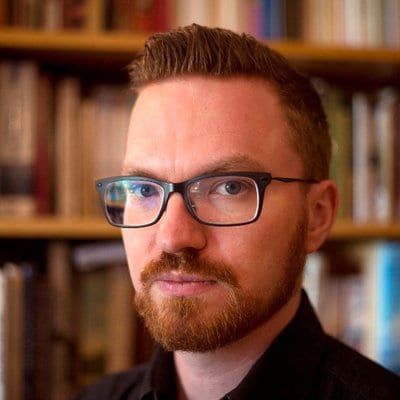The Gaza Strip is often described as the world’s largest open-air prison. Although Israel evacuated its settlements and military bases (which were all illegal) inside Gaza in 2005, the territory remains occupied under international law because Israel maintains strict control of its borders, air space and territorial waters, apart from the rarely open Rafah Crossing into Egypt, over which it coordinates with the Egyptian dictatorship.
However, there are other open-air prisons controlled by Israel inside the occupied West Bank. The village of Nabi Samwil is one example.
A small village near Jerusalem, Nabi Samwil is described by residents, in interviews with Palestinian human rights group Al-Haq, as the village where everything is forbidden. There are so many restrictions on movement, building and even visitors to the village, that Al-Haq describes the Israeli regime there as an act of “indirect forcible transfer” of Palestinians; in other words, ethnic cleansing.
While Palestinians are banned from building new homes or expanding their old ones, the Israelis who live in the nearby colonial settlements (illegal under international law) are free to move and expand them as they see fit.
In the video above, and in a new report, Al-Haq documents the Israeli occupation regime in Nabi Samwil in detail. There are certain unique aspects to it, although many of the restrictions are of a type which Israel imposes on Palestinians across the West Bank.
Originally a village of some 1,000 Palestinians, it was occupied by Israel during its 1967 invasion of the West Bank. During the Six Day War, all but around 200 of the the villagers were compelled to flee to Jordan. Although the village is not far from Jerusalem, Israel did not declare it to be part of the subsequently expanded municipal borders of “Greater Jerusalem”. The Israeli regime thus imposes the green West Bank ID card, on its residents, rather than the blue Jerusalem ID.
In 1971, Israel demolished the homes of the remaining Palestinians, transferring them forcibly to the empty homes of the other villagers who had been forced to flee in 1967.
The village was designated as part of “Area C” under the 1995 Oslo Accords, which stipulate full Israeli control of the zone. During the years of the supposed “peace process”, Israeli settlements boomed under Labour and Likud governments alike; the village was surrounded to the north, south and west by these Jewish colonies, where Palestinians are not allowed to live. And since around 2005, it has been surrounded to the east by Israel’s apartheid (so-called “separation”) wall.
Although in theory there should be no geographical impediment for Nabi Samwil residents to reach Jerusalem, as Palestinians with Israeli-issued West Bank ID cards they are almost always banned from obtaining work in, or even visiting the city.
One villager interviewed in the video, Muhammad ‘Ayed, describes the extreme restrictions on even the most mundane aspects of life, including bringing in cooking gas. “If your friend wants to visit you, you need to coordinate his visit [with the Israeli occupation forces]. He may or may not be allowed to visit you. You basically live in a prison here.”
When he got married, the Israelis denied ‘Ayed permission to extend his parents’ home so that he could raise a family of his own. He eventually moved out of the village, so onerous are the conditions imposed by Israel’s occupation.
READ: 49 facts about Israel’s occupation of the West Bank and Gaza Strip
This is part of a pattern, says Al-Haq: “Residents of Nabi Samwil are subject to a variety of obstacles and forms of coercion, leaving them unable to freely and willingly determine the day-to-day proceedings of their lives. The manifested living conditions for residents in Nabi Samwil can be easily characterised as a coercive environment. This has led and continues to lead to the indirect forcible transfer of residents… It should be further noted that the initial displacement due to Israel’s demolition of the village in 1971 constituted a direct forcible transfer of the Palestinian residents.”
Another aspect of Israel’s matrix of control in Nabi Samwil is its farcical designation as a “national park”. It is named after Samuel, a Biblical character venerated by Muslims, Christians and Jews alike, but the Palestinian link to the area is systematically ignored by Israel, with official government publicity material about the “national park” ignoring the fact that it is actually a village where people still live. As is common in the Israeli-occupied West Bank, even the slightest trace of real or imagined Jewish connection to the land is prioritised over both the histories and traditions of other religions practised by the vast majority of the people who actually live there, as well as the basic needs of the Palestinians, the indigenous people of the land.As Al-Haq explains, “Israeli authorities both ignore and seek to erase the connection of Palestinians to the site.” At times, this erasure is quite literal: “According to one archaeologist who worked at the site during 1993-1994, thick layers of Islamic and Christian remains that were up to 2,000 years old were bulldozed.”
Nevertheless, despite Israel’s ongoing oppression, the village and its occupants are still there. Amir Obeid, the head of the village council insisted: “We have been occupied for 70 years. We will remain no matter what the circumstances are.”
The views expressed in this article belong to the author and do not necessarily reflect the editorial policy of Middle East Monitor.



![Israel demolishing Palestinian schools - Cartoon [Sabaaneh/MiddleEastMonitor]](https://i0.wp.com/www.middleeastmonitor.com/wp-content/uploads/2017/10/20170901_Sabaaneh-Israel-demolishing-Palestinian-schools.jpg?resize=471%2C333&ssl=1)








